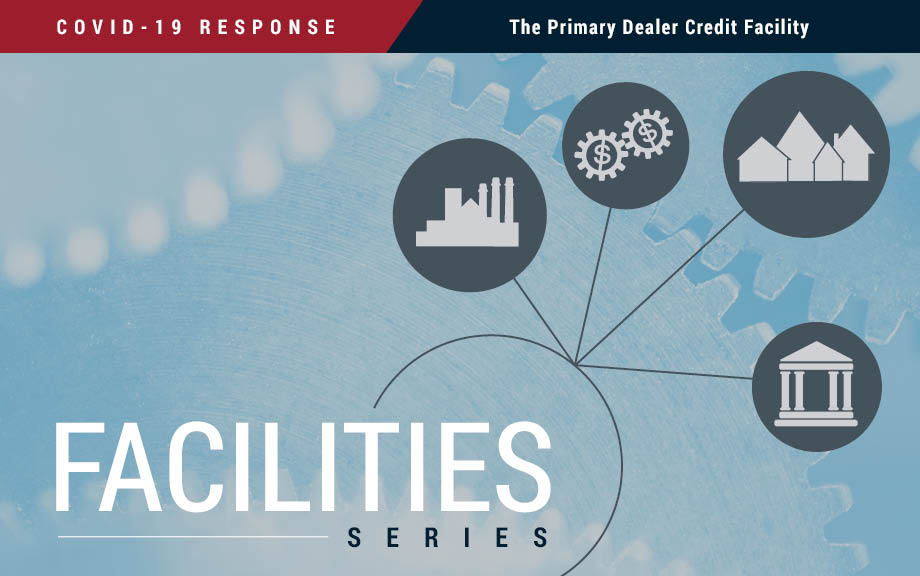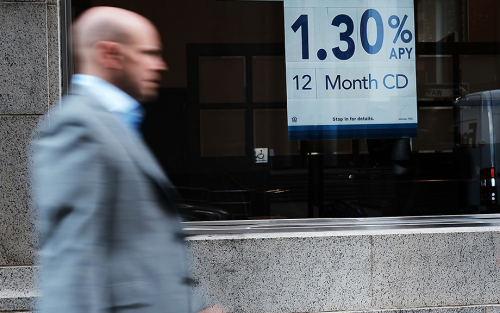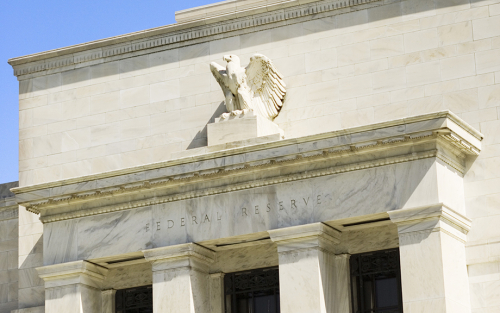A New Reserves Regime? COVID‑19 and the Federal Reserve Balance Sheet
Aggregate reserves declined from nearly $3 trillion in August 2014 to $1.4 trillion in mid-September 2019, as the Federal Reserve normalized its balance sheet. This decline came to a halt in September 2019 when the Federal Reserve responded to turmoil in short-term money markets, with reserves fluctuating around $1.6 trillion in the early months of 2020. Then, in response to the COVID-19 pandemic, the Federal Reserve dramatically expanded its balance sheet, both directly, through outright purchases and repurchase agreements, and indirectly, as a consequence of the facilities to support market functioning and the flow of credit to the real economy. In this post, we characterize the increase in reserves between March and June 2020, describing changes to the distribution and concentration of reserves.
The Primary Dealer Credit Facility

On March 17, 2020, the Federal Reserve announced that it would re-establish the Primary Dealer Credit Facility (PDCF) to allow primary dealers to support smooth market functioning and facilitate the availability of credit to businesses and households. The PDCF started offering overnight and term funding with maturities of up to ninety days on March 20. It will be in place for at least six months and may be extended as conditions warrant. In this post, we provide an overview of the PDCF and its usage to date.
Understanding Heterogeneous Agent New Keynesian Models: Insights from a PRANK

To shed light on the macroeconomic consequences of heterogeneity, Acharya and Dogra develop a stylized HANK model that contains key features present in more complicated HANK models.
Monetary Policy Transmission and the Size of the Money Market Fund Industry

Assets under management (AUM) of retail money market funds (MMF) have soared during monetary policy tightening episodes, lagging the spread between MMF yields and CD rates.
The Transmission of Monetary Policy and the Sophistication of Money Market Fund Investors
In December 2015, the Federal Reserve tightened monetary policy for the first time in almost ten years and, over the following three years, it raised interest rates eight more times, increasing the target range for the federal funds rate from 0-25 basis points (bps) to 225-250 bps. To what extent are changes in the fed funds rate transmitted to cash investors, and are there differences in the pass-through between retail and institutional investors? In this post, we describe the impact of recent rate increases on the yield paid by money market funds (MMFs) to their investors and show that the impact varies depending on investors’ sophistication.
Ten Years Later—Did QE Work?

By November 2008, the Global Financial Crisis, which originated in the residential housing market and the shadow banking system, had begun to turn into a major recession, spurring the Federal Open Market Committee (FOMC) to initiate what we now refer to as quantitative easing (QE). In this blog post, we draw upon the empirical findings of post-crisis academic research–including our own work–to shed light on the question: Did QE work?
The Transatlantic Economy Ten Years after the Crisis: Macro‑Financial Scenarios and Policy Responses

“The Transatlantic Economy Ten Years after the Crisis: Macro-Financial Scenarios and Policy Response,” was the focus of a conference, jointly organized by the New York Fed, the European Commission, and the Centre for Economic Policy Research in April 2018. These three institutions had previously collaborated on a series of events related to transatlantic economic relations, including a workshop in April 2014 and a conference in April 2016. Ten years after the global financial crisis, this conference came at a crucial time in the history of the relationship between the United States and the European Union, and provided an opportunity to revisit and assess recent policy responses. A number of questions were addressed by the panelists: Is the world economy back on a sustainable growth path or have we entered a secular stagnation era with persistently low interest rates and inflation? How large are the spillovers of monetary and fiscal policies? Have we done enough to maintain financial stability and deal with cross border resolution issues, which have been one of the most vexing topics in the regulatory space?
Hey, Economist! Outgoing New York Fed President Bill Dudley on FOMC Preparation and Thinking Like an Economist

Bill Dudley will soon turn over the keys to the vault—so to speak. But before his tenure in office ends after nine years as president of the New York Fed, Liberty Street Economics caught up with him to capture his parting reflections on economic research, FOMC preparation, and leadership. Publications editor Trevor Delaney recently caught up with Dudley.
Fiscal Implications of the Federal Reserve’s Balance Sheet Normalization

In the wake of the global financial crisis, the Federal Reserve dramatically increased the size of its balance sheet—from about $900 billion at the end of 2007 to about $4.5 trillion today. At its September 2017 meeting, the Federal Open Market Committee (FOMC) announced that—effective October 2017—it would initiate the balance sheet normalization program described in the June 2017 addendum to the FOMC’s Policy Normalization Principles and Plans.
Why Pay Interest on Excess Reserve Balances?

In a previous post, we described some reasons why it is beneficial to pay interest on required reserve balances. Here we turn to arguments in favor of paying interest on excess reserve balances. Former Federal Reserve Chairman Ben Bernanke and former Vice Chairman Donald Kohn recently discussed many potential benefits of paying interest on excess reserve balances and some common misunderstandings, including that paying interest on reserves restricts bank lending and provides a subsidy to banks. In this post, we focus primarily on benefits related to the efficiency of the payment system and the reduction in the need for the provision of credit by the Fed when operating in a framework of abundant reserves.














 RSS Feed
RSS Feed Follow Liberty Street Economics
Follow Liberty Street Economics